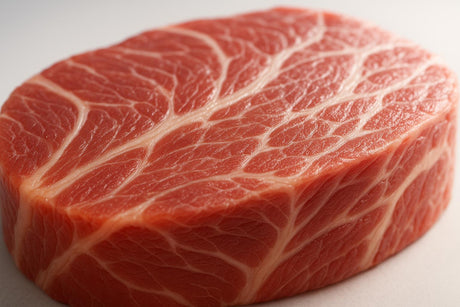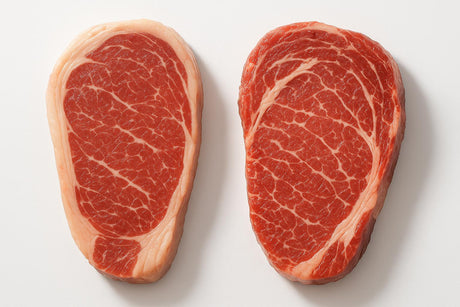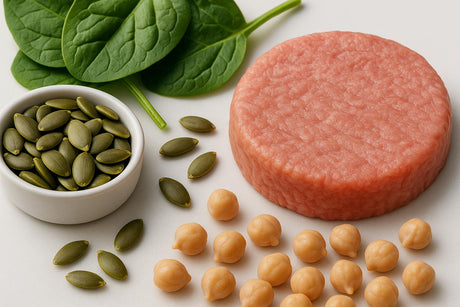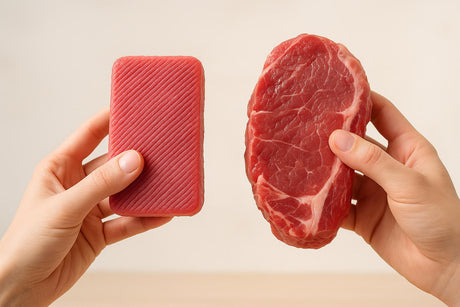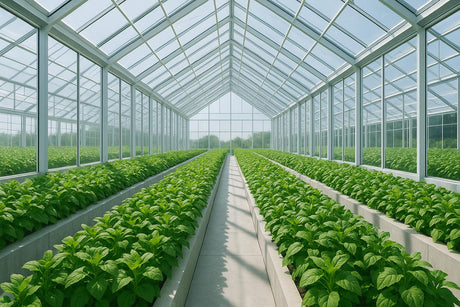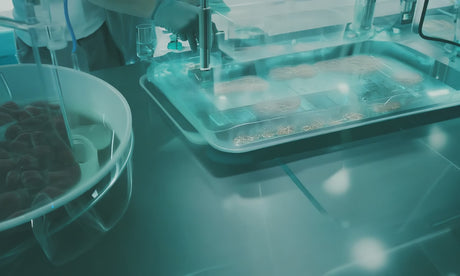Cultivated meat is expensive, keeping it out of reach for most UK households. High production costs and limited private investment have slowed progress. However, government grants are helping reduce costs and accelerate market readiness. Here's the current landscape:
- Funding Drop: Private investment in cultivated meat fell sharply, from nearly $1 billion in 2021 to under $200 million by 2023.
-
UK Government Support: Since 2021, £75 million has been invested in alternative proteins, including:
- £1.6 million for a regulatory sandbox to simplify approvals.
- £15 million for the National Alternative Protein Innovation Centre.
- £1 million to Roslin Technologies for cell line research.
- Cost Challenges: Growth media and bioreactors remain expensive. Grants are targeting these areas to make production cheaper.
Key Takeaways:
- Government grants are essential for cost reduction and scaling production.
- The UK regulatory sandbox is helping companies like Mosa Meat and Hoxton Farms navigate approvals faster.
- Public funding helps stabilise the industry amid fluctuating private investment.
While grants are helping, long-term pricing parity with conventional meat requires sustained investment. Consumers can expect cultivated meat to become more accessible in the coming years, with products potentially hitting the market by 2027.
Recent Government Grants for Cultivated Meat
Major Grants and Recipients
The UK has positioned itself as a key player in funding cultivated meat initiatives, with substantial grants awarded over the last two years. Among the most notable is the £1.6 million regulatory sandbox set up by the Food Standards Agency. This programme is designed to help companies like Hoxton Farms and Roslin Technologies navigate the challenging approval processes required for cultivated meat products[7].
One standout example is Roslin Technologies, a Scottish firm that secured a £1 million grant from the UK government to advance its research in cultivated meat[4]. This funding highlights the UK's commitment to fostering domestic advancements in this field.
Across Europe, other governments are also stepping up. In Poland, LabFarm received a €2 million grant to develop cultivated chicken, while the Czech company Mewery was awarded €200,000 to focus on cultivated pork research[10]. These efforts underline a wider European interest in driving innovation in the cultivated meat sector, complementing the UK's leadership.
The UK government has also invested £15 million into the National Alternative Protein Innovation Centre, a research hub aimed at supporting multiple companies working on cultivated meat technologies[2]. This shared resource model enables smaller businesses to access expertise and facilities that might otherwise be out of reach.
| Company/Project | Country | Grant Amount | Purpose | Year |
|---|---|---|---|---|
| UK Regulatory Sandbox | UK | £1.6 million | Accelerate cultivated meat approval | 2024-2025 |
| National Alternative Protein Innovation Centre | UK | £15 million | R&D in alternative proteins | 2024-2025 |
| Roslin Technologies | UK | £1 million | Cultivated meat research | 2024-2025 |
| LabFarm | Poland | €2 million | Cultivated chicken development | 2024-2025 |
| Mewery | Czech Republic | €200,000 | Cultivated pork R&D | 2024-2025 |
These public investments, combined with private funding, create a robust ecosystem for innovation and growth.
Public Funding and Private Investment
The combination of public and private funding has been crucial to the growth of the cultivated meat sector. While government grants provide stability, private investment adds momentum. For instance, Mosa Meat raised €3.7 million through crowdfunding in 2024, bringing its total funding to $139 million[2]. The company's involvement in the UK regulatory sandbox adds further value by streamlining the approval process.
The broader funding landscape reveals the importance of public support in stabilising an otherwise unpredictable market. Global investment in cultivated meat plummeted from nearly $1 billion in 2021 to less than $200 million in 2023. However, recent figures suggest a recovery, with $177-226 million raised in 2024-2025[3]. Government grants act as a safety net, providing essential support during these fluctuations.
The UK’s broader industrial strategy also bolsters the sector. A £184 million pledge to advance engineering biology creates infrastructure that benefits cultivated meat producers. This initiative ensures access to facilities, skilled talent, and research collaborations that private funding alone cannot provide[9].
Valentina Gallani from ProVeg International highlights the value of this public-private partnership model:
rigorous regulatory processes supported by grants can help the industry grow sustainably and ensure consumer safety[7]
Government grants not only validate startups but also attract private investors. The regulatory sandbox, in particular, reduces both the time and cost associated with product approvals, making it easier for companies to bring their innovations to market.
Meanwhile, the EU's FEASTS project adds another layer of support by examining how cultivated meat could integrate into Europe’s future food systems[10]. This research complements company-specific funding by laying the groundwork for long-term industry development.
The State of Global Policy on Alternative Proteins
How Government Grants Lower Cultivated Meat Prices
Government grants play a key role in bringing down the cost of cultivated meat. By funding research, shared facilities, and innovations that cut production expenses, these programmes make it easier for companies to create affordable products for consumers.
Lower Production Costs
Initiatives like the National Alternative Protein Innovation Centre and CARMA offer shared research facilities and expert resources. This approach reduces the financial burden on individual companies, especially smaller ones, by giving them access to advanced equipment and specialised knowledge without requiring hefty independent investments.
Take Mosa Meat, for example - a Dutch company involved in the UK's regulatory sandbox. In 2024, it secured €40 million in funding, marking the largest investment in cultivated meat since 2022 [3]. With the regulatory sandbox’s support, Mosa Meat has been able to focus on scaling its production and improving cost efficiency [7].
As venture capital funding becomes less reliable, government grants provide a stable and much-needed financial lifeline [3].
Addressing Expensive Components
While shared infrastructure helps lower overall costs, grants also target the priciest parts of production. Growth media, the nutrient solution essential for cell growth, is one such area. It often represents a significant portion of production expenses, so funding programmes have supported research aimed at creating more affordable alternatives.
Another challenge lies in bioreactor technology, which is crucial for scaling up production but remains expensive. Public funding has enabled partnerships between companies and engineering firms to innovate in this space. For instance, Believer Meats has teamed up with engineering firm GEA to develop more efficient bioreactor systems and improve media rejuvenation processes [1]. These advancements are pivotal in making cultivated meat more accessible to the market.
Companies Using Government Grants to Cut Costs
Government grants have become a key tool for companies looking to address the high production costs of Cultivated Meat. By tapping into public funding, these firms are scaling up operations, advancing technology, and edging closer to market readiness. Let’s take a closer look at how some companies are making progress with this support.
Mosa Meat: Scaling Production with Government Backing
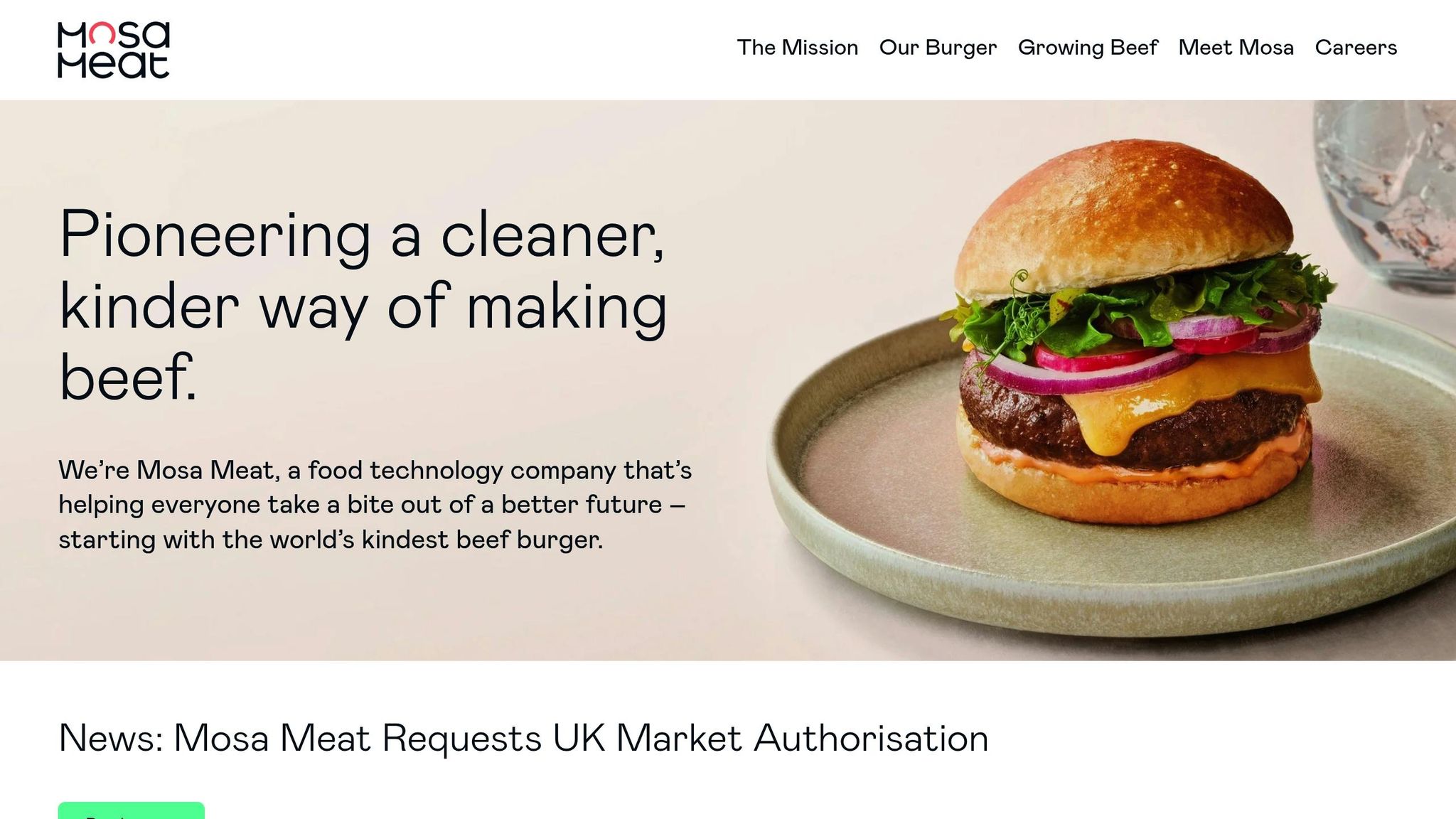
Mosa Meat, a Dutch company, is a prime example of how grants can make a difference. In June 2024, the company joined the UK regulatory sandbox with the help of a £1.6 million grant. This funding has allowed Mosa Meat to refine its safety dossier submissions, aiming for a 2027 market launch. Initially, the company will focus on cultivated fat for blended products [2].
The grant has been instrumental in driving manufacturing innovations that reduce unit costs and improve scalability. With total funding of US$139 million (£114 million), Mosa Meat is developing production methods designed to bring down costs significantly.
UK Companies Advancing with Grant Support
The UK has positioned itself as a leader in Cultivated Meat innovation, with several companies benefiting from government grants to reduce costs and accelerate their journey to market.
- Roslin Technologies: Based in Scotland, this company is using a £1 million grant to optimise cell lines and cut the costs of growth media - a notoriously expensive component in Cultivated Meat production [4].
- Hoxton Farms and Uncommon Bio: These companies are leveraging the UK regulatory sandbox to work alongside academic and regulatory experts. This collaborative environment, supported by sandbox funding, is helping refine their production processes as they prepare for market entry.
Additionally, the National Alternative Protein Innovation Centre has invested £15 million to streamline research and development for multiple UK firms. By working directly with Cultivated Meat companies, the centre is helping them develop scalable, cost-effective production methods and supporting their efforts to enter the market [2].
| Company | Grant Amount | Year | Focus Area | Progress |
|---|---|---|---|---|
| Mosa Meat | £1.6M (sandbox) | 2024 | Regulatory approval, production scaling | Filed UK approval; targeting 2027 launch |
| Roslin Technologies | £1M | 2024 | Cell line development, media costs | Developing efficient cell lines |
| National Alt. Protein Centre | £15M | 2024 | Industry collaboration, R&D | Supporting multiple UK companies |
Since 2021, the UK government has poured £75 million into alternative protein innovation, including Cultivated Meat [6]. This level of investment highlights a clear commitment to making Cultivated Meat a viable, cost-effective option for consumers and businesses alike.
sbb-itb-c323ed3
Problems with Depending on Government Grants
Government grants have played an important role in advancing Cultivated Meat development. However, relying too heavily on these funds presents significant challenges that could hinder the industry's ability to make products affordable for everyday consumers in the UK. The temporary nature of such funding creates obstacles to achieving the long-term pricing competitiveness needed to bring Cultivated Meat into more households.
Limited Funding and Short Timelines
Government grants often come with fixed budgets and short durations, which clash with the lengthy development cycles required for Cultivated Meat technology. Companies like Hoxton Farms, Roslin Technologies, and Mosa Meat must compete for limited resources within tight timeframes, which adds pressure to an already challenging process.
This short-term funding creates uncertainty for businesses trying to plan long-term pricing strategies. For instance, companies such as Ivy Farm Technologies and Aleph Farms, which are still awaiting regulatory approval, face extended periods of investment without generating any revenue [7].
The Food Standards Agency (FSA) is working to complete "a full safety assessment of two cultivated meat applications" during the current regulatory sandbox period [7]. However, this means only a fraction of participating companies may achieve full regulatory approval within the programme’s timeline. These constraints further complicate the task of competing with conventional meat producers, who benefit from more consistent and substantial subsidies.
The core issue here is that Cultivated Meat requires ongoing, long-term investment to achieve the economies of scale needed for competitive pricing. Unfortunately, grant programmes are often short-lived and may end before companies can reach commercial viability.
Unequal Support Compared to Conventional Meat
Another significant hurdle is the imbalance in government support between Cultivated Meat and traditional agriculture. For example, the UK government has allocated £150 million in farm improvement grants to over 8,000 farmers across England [5]. This is double the £75 million invested in alternative proteins since 2021 [6][7].
This disparity creates an uneven playing field, as conventional meat producers benefit from decades-old subsidy systems that artificially lower their market prices. In contrast, Cultivated Meat companies receive one-time or short-term grants, leaving them at a competitive disadvantage.
To put it simply, Cultivated Meat producers face a double challenge: they must contend with their own high production costs while also competing against the artificially reduced prices of heavily subsidised conventional meat. This significantly reduces the impact that government grants can have on making cultivated products more affordable.
Adding to the problem, much of the grant funding for Cultivated Meat is focused on regulatory processes rather than production technology. For instance, the £1.6 million regulatory sandbox is designed to streamline novel food applications and provide guidance [1]. However, it does little to address expensive production challenges like growth media, scaling bioreactors, or managing energy consumption.
Without addressing these imbalances in government support, even the most successful grant programmes will struggle to make Cultivated Meat price-competitive with conventional options in the UK. This highlights the need for sustained, long-term investment if Cultivated Meat is to achieve price parity and become a viable alternative for consumers.
How Cultivated Meat Shop Educates UK Consumers
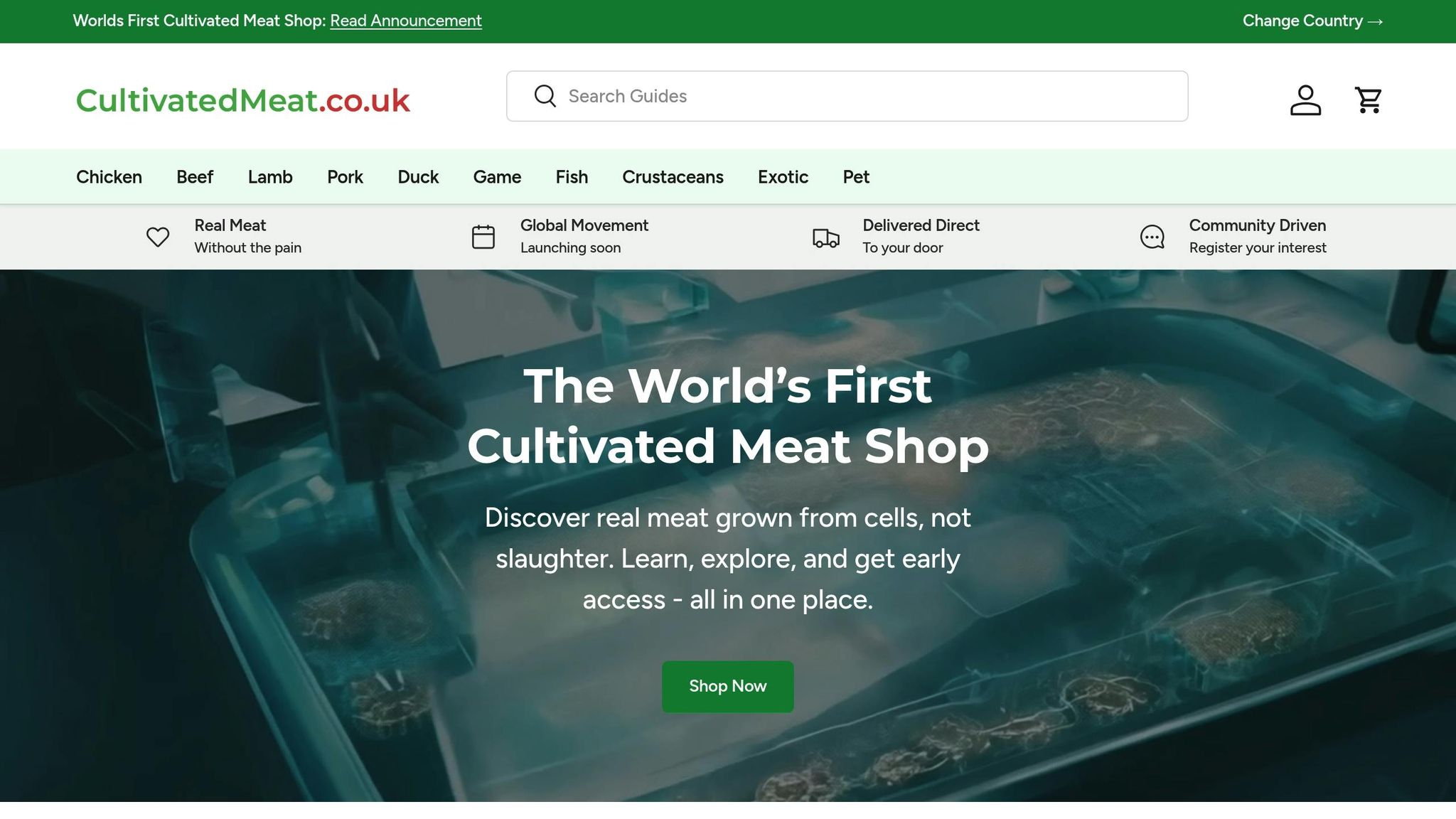
With changing regulations and government grants shaping the future of cultivated meat, UK consumers need straightforward and trustworthy information about how these developments will impact pricing. As government initiatives help lower production costs, it's essential to communicate these benefits clearly. Enter Cultivated Meat Shop - the first platform of its kind, focused on bridging the gap between complex industry changes and what they mean for everyday shoppers.
In the UK, companies are making strides in regulatory approvals, backed by significant government funding. However, as cultivated meat products aren't yet available for purchase, consumers need a reliable source to navigate the evolving landscape of subsidies, pricing shifts, and market readiness. Cultivated Meat Shop connects these industry developments to consumer expectations, ensuring people stay informed.
Simplifying Complex Information for Shoppers
Cultivated Meat Shop breaks down technical industry details into easy-to-understand insights, helping UK consumers grasp how government funding influences future pricing and availability. For example, the platform highlights how the UK's £1.6 million Cell-Cultivated Products Regulatory Sandbox is reducing production costs that would otherwise be passed on to buyers [7].
It also explains the role of the Food Standards Agency's (FSA) pilot support service, launched in June 2025, which helps businesses navigate market authorisation more efficiently [8]. By streamlining this process, companies can reduce operational costs, which ultimately translates to more affordable products when they hit the shelves.
The platform provides context around why government support is critical for pricing fairness. Traditional meat has long benefited from subsidies, which cultivated meat currently lacks. Cultivated Meat Shop helps consumers see how these new grants aim to level the playing field, preparing them to assess pricing fairly when cultivated meat becomes available. This transparency ensures shoppers understand that government backing is a stepping stone toward achieving economies of scale.
Preparing Consumers for Market Launch
Beyond education, the platform readies consumers for the arrival of cultivated meat. Its waitlist feature is a key tool for gauging demand ahead of market release. This becomes especially useful as UK companies navigate the two-year regulatory sandbox programme, during which the FSA plans to complete safety assessments for two cultivated meat applications [7].
Cultivated Meat Shop also offers previews and practical guides, keeping consumers informed about regulatory progress involving companies like Hoxton Farms, Roslin Technologies, and Uncommon Bio [7]. Its clear and accessible content helps demystify cultivated meat, ensuring consumers know what to expect as the category develops.
The waitlist data plays another important role - it provides companies with valuable insights into market readiness and pricing expectations. As the UK works to catch up with countries that have already approved cultivated meat, this feedback loop supports the industry's growth while aligning with consumer needs [7].
Through regular updates and transparent communication about government initiatives, Cultivated Meat Shop ensures UK consumers are well-prepared for a future where cultivated meat becomes a viable, affordable alternative to conventional options. By focusing on education, the platform helps shoppers understand the value of these products and the vital role government support plays in making them accessible.
Conclusion: Making Cultivated Meat Affordable
Government grants play a critical role in lowering the cost of Cultivated Meat for UK consumers. The UK's commitment to alternative protein innovation highlights how public funding can reduce production expenses and speed up market readiness. Initiatives such as the Cell-Cultivated Products Regulatory Sandbox [1][2] are directly tackling the challenges that have made Cultivated Meat costly. By addressing these hurdles, public funding is not only cutting production costs but also paving the way for future advancements.
Global investment trends in the sector have been unpredictable, though funding has shown signs of stabilisation recently. A good example is Mosa Meat's latest funding round, which underscores how government-backed programmes can bolster investor confidence, even during uncertain times [3].
These grants have supported the development of more affordable, animal-free growth media and advanced bioreactor technologies [10]. Additionally, the Food Standards Agency's pilot support service, introduced in June 2025, is helping streamline regulatory processes, cutting down on delays and associated costs [8].
That said, government support alone cannot solve every challenge. The industry is still pre-revenue, with products available only in limited quantities. Short grant durations and competition with heavily subsidised traditional meat remain significant obstacles. Overcoming these issues will require ongoing collaboration between public and private sectors. Meanwhile, initiatives like Cultivated Meat Shop are ensuring that consumers stay informed about these developments.
As government programmes reshape the industry, it's vital for consumers to understand how these changes will impact pricing and availability. Cultivated Meat Shop is stepping in to educate UK shoppers, helping build the demand necessary to sustain investment in this emerging market.
Making Cultivated Meat affordable requires a united effort from governments, businesses, and consumers. With the regulatory sandbox aiming to approve at least two products within the next two years [1][2], and companies like Mosa Meat planning to enter the market by 2027, the groundwork is being laid for Cultivated Meat to become a practical and affordable alternative to traditional meat. Achieving this vision will depend on continued public funding, private investment, and consumer engagement throughout the journey to market.
FAQs
How do government grants help make cultivated meat more affordable for consumers?
Government grants significantly aid in lowering the production costs of cultivated meat, making it a more wallet-friendly choice for consumers. These funds often go towards research and development, helping companies fine-tune production techniques, enhance efficiency, and expand operations.
By investing in advancements and infrastructure, governments can play a key role in reducing the expense of producing cultivated meat. Over time, this could pave the way for a food system that's both more ethical and environmentally conscious.
What challenges do cultivated meat companies face in making their products as affordable as conventional meat?
Cultivated meat companies are grappling with several obstacles when it comes to bringing costs down to compete with conventional meat. A primary challenge lies in the steep production costs, especially due to the specialised nutrients and growth factors needed to grow cells effectively. On top of that, scaling up production to an industrial level while ensuring both quality and safety significantly drives up expenses.
Another issue is the absence of established infrastructure for large-scale production. Unlike conventional meat, which benefits from a mature and optimised supply chain, cultivated meat lacks the same level of support systems, making production comparatively pricier. However, as the industry expands and takes advantage of technological progress, government funding, and economies of scale, there’s hope that costs will come down, eventually making cultivated meat a more affordable option for consumers.
What is the UK regulatory sandbox, and how does it support the cultivated meat industry?
The UK regulatory sandbox is a government-led programme aimed at helping forward-thinking industries, such as cultivated meat, tackle regulatory hurdles more effectively. It offers a structured setting where businesses can trial their products and processes while engaging directly with regulators to meet safety and quality standards.
For the cultivated meat sector, this translates into quicker strides towards market readiness. By tackling regulatory issues early and collaboratively, companies can concentrate on perfecting their products, cutting costs, and gearing up for commercial launch. This initiative marks a meaningful move towards making cultivated meat a more available and practical choice for consumers across the UK.







